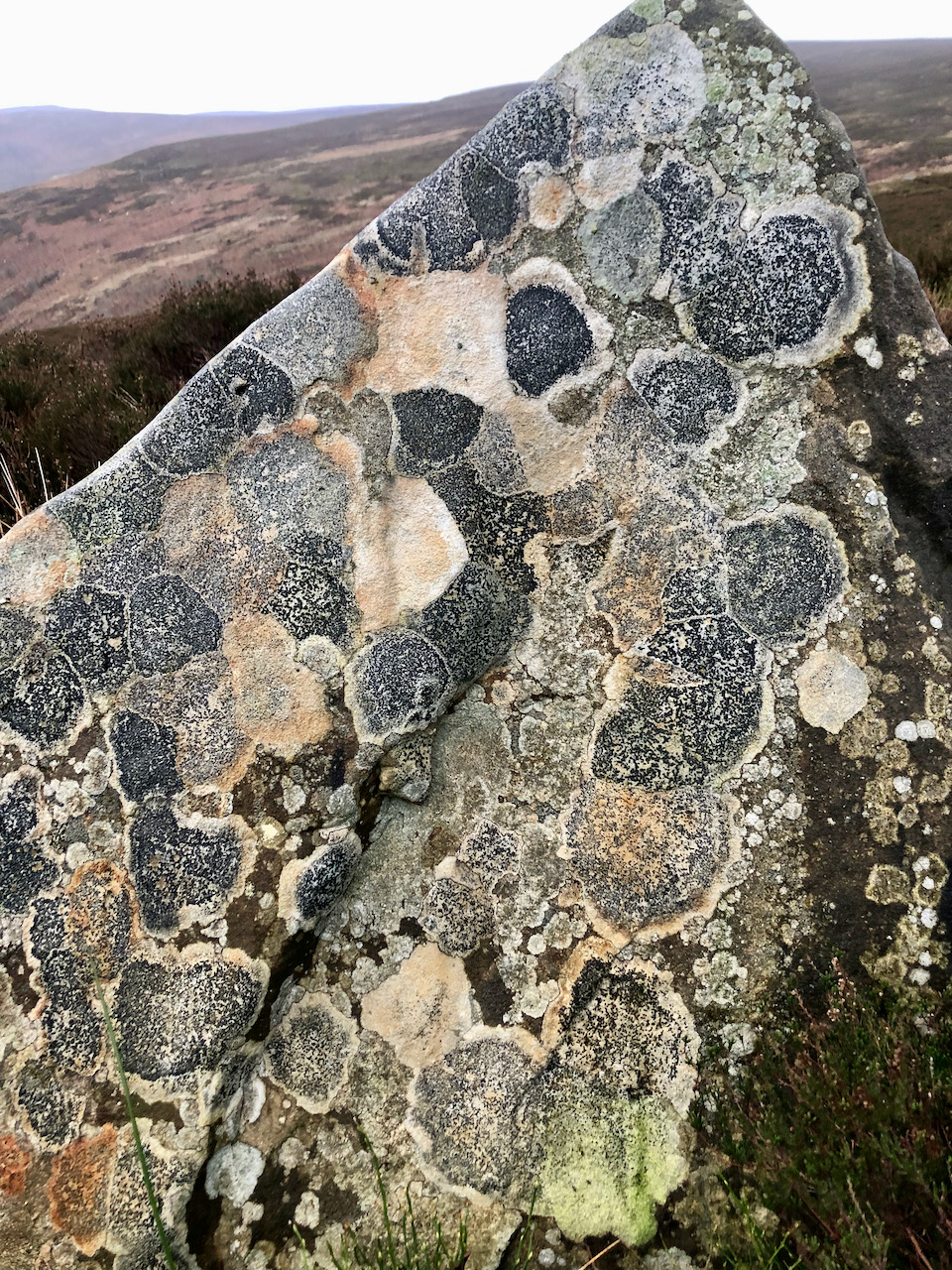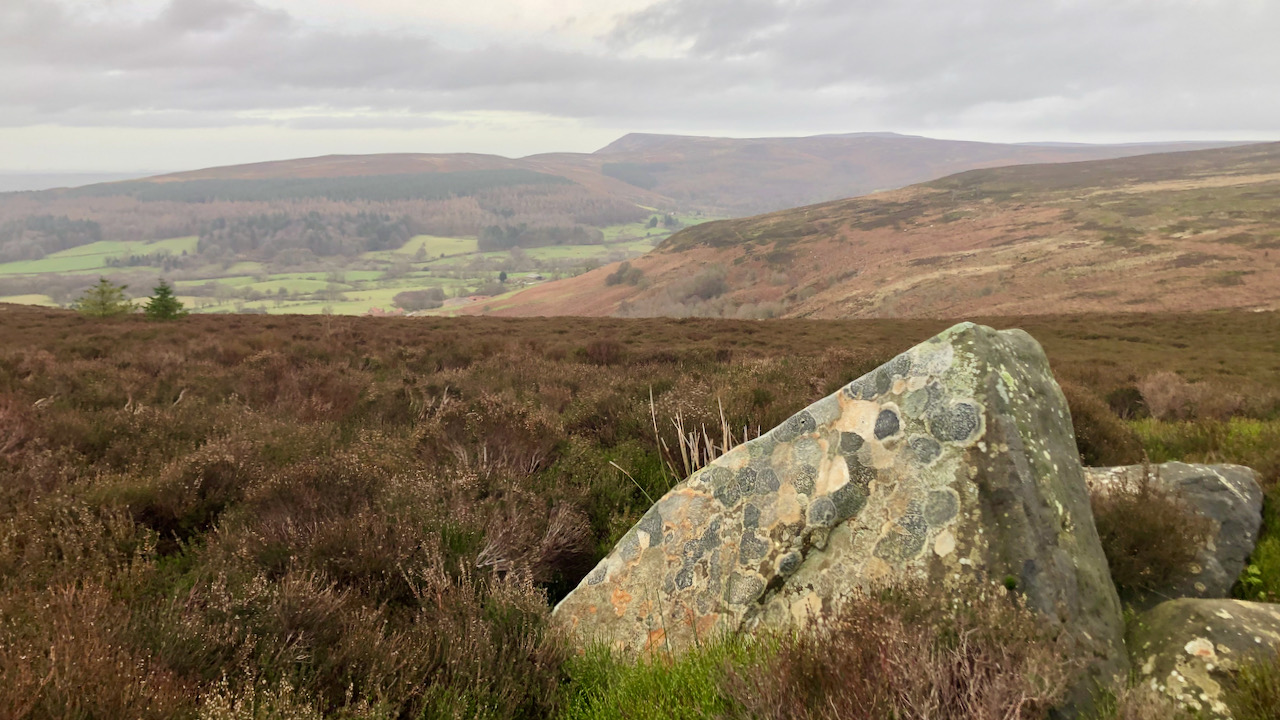Of all the boulders on the North York Moors, this is perhaps my favourite. It rests nestled in the heather on Stony Ridge on Whorlton Moor, but back in the last ice age, it would’ve been getting a good washing from the waves along the shore of Lake Scugdale.

Now, in places where fungi and algae struggle to thrive, evolution has come up with a symbiotic partnership: lichens. And these unsung heroes have decorated this boulder like nature’s own artwork.
Lichens don’t get the credit they deserve, not by a long shot. Even the great botanist Carl Linnaeus dissed them as ‘rustici pauperrimi,’ the poor trash of Nature1Jørgensen, M & Robert Lücking. “The ‘Rustici Pauperrimi’: A Linnaean Myth about Lichens Rectified.” The Linnean. Vol 34. No. 1. April 2018. <https://ca1-tls.edcdn.com/Linnean_Vol-34_1_April-2018_Web.pdf> [accessed 2 January 2024]. The term ‘lichen‘ itself comes from Greek, meaning eruption, wart, or leprosy.
These little survivors can tough it out in temperatures that would freeze most plants solid and at altitudes where no sensible creature would set up camp. Also, they’re pretty handy – you can use them for food, poisons, embalming, and dyes. Ever wonder what gives Harris tweed its character? For sure, lichens plays a part.
Now, lichens are finicky. They’re very sensitive about sunlight, moisture, pH, minerals, and air quality.
Identification is a real headache. I can only put a name to one – Rhizocarpon geographicum, or the map lichen. Its green crust plates with thin black edges look like countries on a map. Sadly, no sign of it on this boulder.
Some lichens, like R. geographicum in fact, are extremely slow growers. Real slowcoaches. Scientists use a fancy technique called ‘lichenometry‘ to estimate timescales. In simple terms, the wider a lichen spreads, the longer it’s been growing there. But the growth rate depends on moisture levels – quicker in the west of the Pennines and on the north side of rocks. Still, you won’t catch R. geographicum growing faster than 1 mm per year. So, if you stumble upon a big circular patch with a 40cm radius, you’re staring at something that’s been undisturbed for at least four centuries. They’ve even used this trick to date glacier retreat, buildings, and the statues on Easter Island. Earthquakes? Yes, they’ve measured those too.
The sheer diversity and omnipresence of lichens can be a bit much to take in.
- 1Jørgensen, M & Robert Lücking. “The ‘Rustici Pauperrimi’: A Linnaean Myth about Lichens Rectified.” The Linnean. Vol 34. No. 1. April 2018. <https://ca1-tls.edcdn.com/Linnean_Vol-34_1_April-2018_Web.pdf> [accessed 2 January 2024]

Leave a Reply